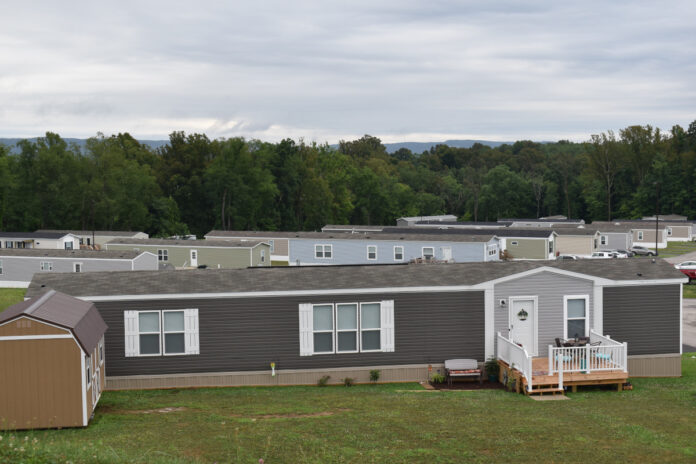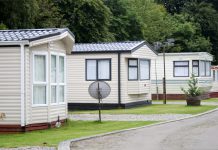
The U.S. Department of Housing and Urban Development on July 19 posted to the Federal Register another slate of changes for manufactured housing, the most robust update to the HUD Code in decades.
The changes include 88 new and updated standards, bringing the HUD Code in line with more recent manufactured housing industry standards, and further improving the quality and safety of manufactured home construction.
“Manufactured homes are an important element of the nation’s affordable housing supply,” HUD Assistant Secretary for Housing Julia Gordon said. “These proposed updates, when final, will help to expand the availability of safe and affordable homes that align with current design trends and construction methods.”
Proposed changes in the rule will facilitate innovation and greater production of manufactured homes with features that are sought-after by consumers and that are common consumer needs for modern living, HUD stated in a press release on the updates.
When final, the updates contained in the proposed rule will enact a significant number of recommendations made by the federally-mandated Manufactured Housing Consensus Committee.
Further, the updates will eliminate the need for manufacturers to obtain alternative construction approvals for frequently requested features and materials that already meet or exceed HUD standards. The proposed updates are available for public comment for 60 days.
Overview of Proposed Rule Changes for Manufactured Housing
- Materials that facilitate modern design approaches and improve quality: Updates to reference standards for materials (wood, steel, piping) and products will align with other building standards, will allow the use of more modern design approaches and installation of alternative materials, and will improve the quality and safety of homes for consumers.
- Ridge roof designs: Revising definitions and regulatory language will allow certain specified roof ridge designs (peak cap and peak flip roof assemblies) without a requirement for specific on-site inspections by a HUD-approved agency, except for certain exclusions. This type of roof installation is common throughout the industry and uses technology that is time-tested. This will be beneficial for manufacturers and consumers by incorporating more recent design practices into the regulations and eliminating unnecessary inspections and associated costs.
- Multi-unit manufactured homes: Proposed changes to regulatory language address multi-unit dwellings, proposing allowance of up to three units while assuring comprehensive fire safety to multi-unit occupants by adding benchmarks and guidelines that meet Manufactured Housing Construction and Safety standards. This may help to further leverage manufactured housing as a means of addressing affordable housing needs.
- Open floor plans, truss designs, and specifications for attics: The updated requirements for exterior door separation and structural design requirements will improve allowances for open floorplans while maintaining fire safety, clarify unclear provisions, and allow the potential for optimization of truss design. In addition, the proposed rule will include more clarity regarding structural design requirements for attics.
- Accessibility improvements: Modifications to standards for accessible showers will comply with nationally-recognized disability standards for roll-in showers. This will eliminate the need for HUD alternative construction approval and reduce costs and burdens for manufacturers and consumers.
- Modern and energy-saving appliances: Updating and adding new standards will allow for the use of more modern and energy-efficient appliances, including gas-fired tankless water heaters, eliminating the need for HUD alternative construction approvals for the use of such appliances.
- Additional process efficiencies that save time and reduce costs: Improved language stipulating prerequisites for the process of obtaining installation licenses will increase flexibility for installers; updates to water system piping testing procedures will decrease on-site testing time; and utilization of appliance QR codes for manuals and information will reduce paperwork and bookkeeping.
In January, HUD published proposed rule changes for manufactured homes, that were given an added grace period before going into effect. Those changes, which took went into effect July 12, address data plates, interior passages, stairways, safety alarms, garages and carports, among other considerations.
What is HUD Code?
The National Manufactured Housing Construction and Safety Standards Act of 1974, often referred to as the HUD Code, authorizes the establishment of federal standards for the design and construction of manufactured homes to assure quality, durability, safety, and affordability. Effective in 1976, HUD established the standards, which has worked to transform manufactured homes in quality, safety, durability, and affordability.
HUD standards may preempt state and local laws that do not conform to the HUD standards. HUD’s Office of Manufactured Housing Programs enforces standards directly or through State Administrative Agencies that have partnered with HUD, monitors inspections of factories and retailer lots, regulates installation standards for the homes, administers a dispute resolution program for defects, establishes and collects a fee for each home built, authorizes a certification label to be placed on each section of a home that meets the HUD standards, and pursues a civil or criminal action for violations of the act.
What Does the Manufactured Housing Consensus Committee Do?
The Manufactured Housing Consensus Committee is a statutory Federal Advisory Committee body charged with providing recommendations to the Secretary of HUD on the adoption, revision, and interpretation of HUD’s Manufactured Home Construction and Safety Standards and related procedural and enforcement regulations. The MHCC was also charged with developing and proposing model installation standards to the Secretary of HUD, so HUD could enact model manufactured home installation standards and implement an installation program for the manufactured housing industry. By regulation, HUD also engages the MHCC in the process of revising the Manufactured Home Model Installation Standards and Installation Program Regulations.
MHInsider is a product of MHVillage and is the go-to resource for manufactured housing news.









